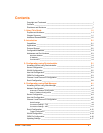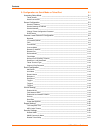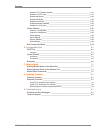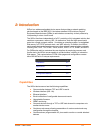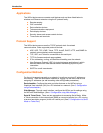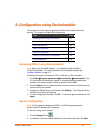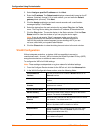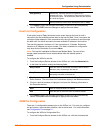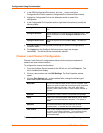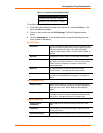
Introduction
2-2 WiPort™ User Guide
Applications
The WiPort device server connects serial devices such as those listed below to
wireless and Ethernet networks using the IP protocol family.
Remote sensing
CNC controllers
Data collection devices
Telecommunications equipment
Data display devices
Security alarms and access control devices
Time clocks and terminals
Protocol Support
The WiPort device server uses the TCP/IP protocol stack for network
communications. Other supported protocols include:
ARP, UDP, TCP, ICMP, Telnet, TFTP, AutoIP, DHCP, HTTP, and SNMP for
network communications and management.
TCP, UDP, and Telnet for connections to the serial port.
TFTP for firmware and web page updates.
IP for addressing, routing, and data block handling over the network.
User Datagram Protocol (UDP) for typical datagram applications in which
devices interact with other devices without maintaining a point-to-point
connection.
SMTP for e-mail transmission.
Configuration Methods
For the unit to operate correctly on a network, it must have a unique IP address on
the network. There are three basic methods for logging into the device server and
assigning IP addresses (as well as setting other configurable parameters):
DeviceInstaller: Configure the ports and other features on the WiPort using a
Graphical User Interface (GUI) on a PC attached to a network. (See 3: Configuration
using DeviceInstaller.)
Web-Manager: Through a web interface, configure the WiPort and its settings using
the WiPort’s Web-Manager. (See 4: Configuration using Web-Manager.)
Serial & Telnet Ports: There are two approaches to accessing Serial Mode. Make
a Telnet connection to the network port (9999) or connect a terminal (or a PC running
a terminal emulation program) to the unit’s serial port. (See 5: Configuration via Serial
Mode or Telnet Port.)




